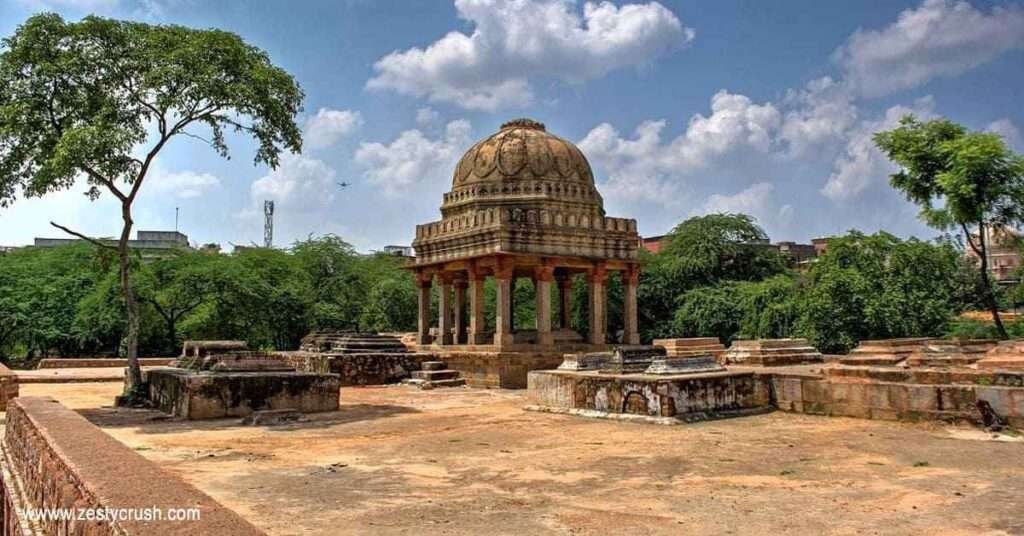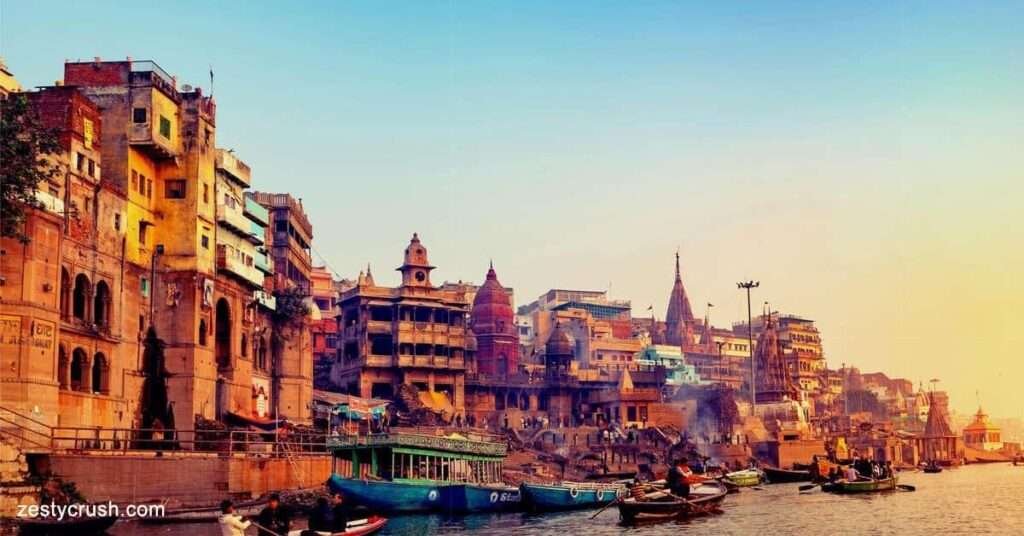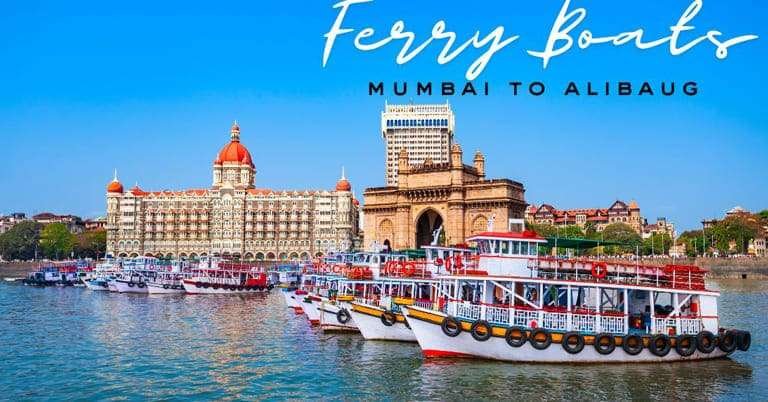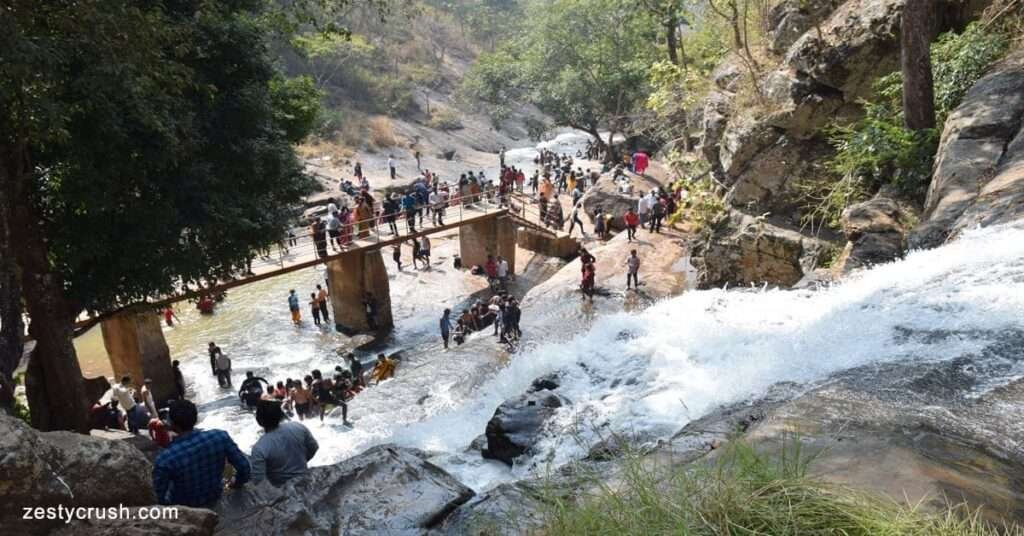SPITI VALLEY WEATHER FORECAST
One of the rare places that you cannot forget long after you are gone is the Spiti Valley – a location with breathtaking scenery, refreshing mountain air, and almost calm relief from all the chaotic options that city life affords. What I have come to realize from my visits here is that the Spiti Valley weather defines your experience. Whether visiting in the depth of winter or warmth of summer, understanding your weather will better enable you to make the most of your visit.
So, in this travel guide, I’m going to take you through the weather month by month to help you decide when is best to come here depending on your interests and passions. Let’s get started, discover how every season manifests something uniquely beautiful in this gorgeous place.
Why Weather Spiti Valley Plays a Crucial Role in Spiti Valley Tourism
The weather could either be your best friend or your worst enemy while on a trip to Spiti Valley. Actually, it has been known to reach more extreme Spiti temperature; from warm summer days to cold winter nights. If you plan to visit during specific times of the year, expect areas to be inaccessible because of snow, or trekking routes will be closed. One of my trips involved leaving me literally stuck in Kaza because of underestimating the early winter snowfall! I check the Spiti valley weather today before leaving and pack according to the changing weather and road patterns.
Here is the Spiti Valley Temperatue month wise from January to December-
| Month | Average Max Temperature (°C) | Average Min Temperature (°C) |
| January | -17 | -27 |
| February | -15 | -25 |
| March | -10 | -23 |
| April | -6 | -19 |
| May | -1 | -15 |
| June | 5 | -9 |
| July | 11 | -1 |
| August | 12 | 0 |
| September | 8 | -6 |
| October | 1 | -17 |
| November | -7 | -24 |
| December | -14 | -29 |
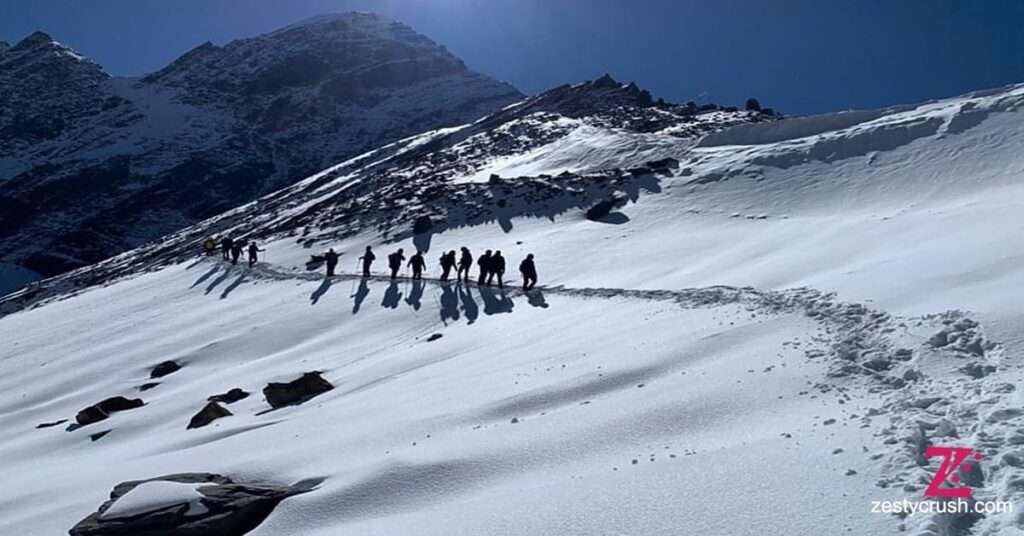
Lahaul Spiti Valley Weather in Winter (December to February)
December Weather in Spiti Valley
Spiti in December is an enchanting winter wonderland, and Spiti Valley temperature in December can drop as low as -20°C. Snow blankets the entire region, and though the beauty is unparalleled, many roads, including Rohtang Pass, are closed. Visit the place if you need pristine snowfall and silent landscapes, visiting during this time will leave you with unforgettable memories. However, be prepared to face harsh conditions. You can find Rohtang current temperature on the top of this article. Also you can search current temperature on several other websites including IMD and Accuweather.
Spiti Valley in January
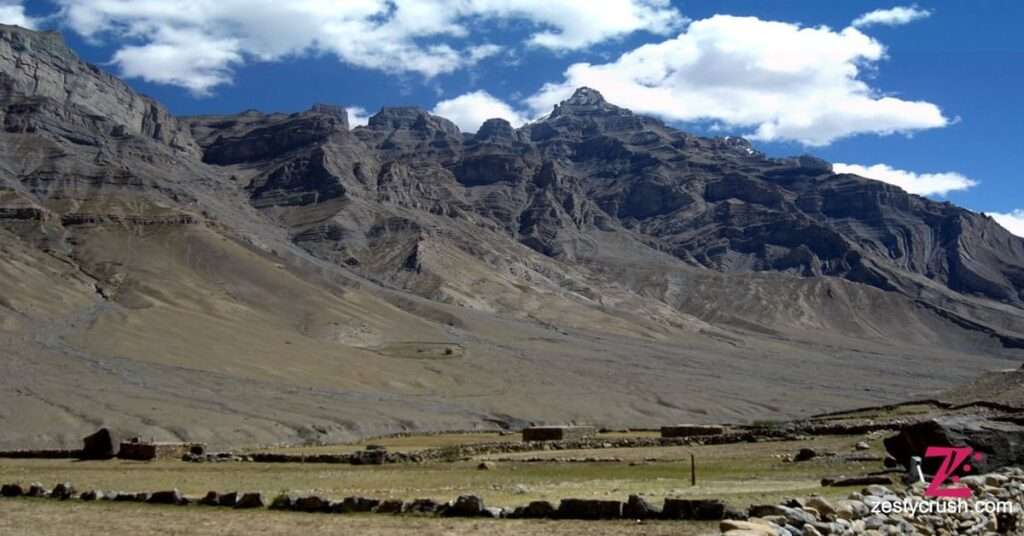
Spiti in January will experience the most severe weather. The Kaza temperature in January usually goes far below -25°C, while several guesthouses close since people also move to warmer regions. If you are indeed a winter enthusiast, you can still enjoy Spiti’s beauty, but you will need to plan ahead. Pin Valley’s snow trek or short treks to frozen waterfalls are possible but require local guides and lots of preparation.
February Weather in Spiti Valley
Spiti Valley in February brings slightly longer days, but the weather remains bone-chilling. The Spiti temperature today can still hover well below freezing, and travel remains difficult. The upside? You’ll likely have the valley to yourself, with endless opportunities for photography of snowy landscapes and ice formations.
Spring Weather in Spiti Valley (March to May)
March Weather in Spiti Valley
Spiti valley in March begins to thaw, but the roads may still be blocked by snow. Trekking routes slowly start to open up as the snow melts. If you enjoy cooler temperatures and quieter times, March is an excellent month to explore the valley without the summer rush. The Spiti valley temperature in March ranges from -5°C at night to 10°C during the day, offering a mild but still chilly atmosphere.
April Weather in Spiti Valley
Spiti valley in April feels more alive, with budding greenery and clearer skies. The Spiti valley temperature in April is comfortable for outdoor activities, ranging from 5°C to 15°C. This is a fantastic time for trekkers and photographers who want to capture the beauty of the valley as it transitions from winter to spring. April, May and June months are best season to visit Spiti valley
May Weather in Spiti Valley
The kaza temperature in May shoots up to 20°C in the daytime, and Spiti valley in May is in its best flowering condition. It’s a great time for hiking and trekking into monasteries and enjoying warm and sunny weather conditions while passes are still covered in snow since all the roads going to Kaza may have thinned out by this time.
Summer Weather in Spiti Valley (June to August)
June Weather in Spiti Valley
Spiti valley in June starts to grow perfect for the travelers coming from outside as Rohtang pass temperature in June is cooler and the pass is usually open allowing easy access to the valley. The Spiti valley temperature in june can vary between 10 degrees to 25 degrees, making it extremely appropriate for trekking, camping, and biking. Experience the best weather for hiking and exploring of whatever Spiti provides, including high altitude lakes and ancient monasteries.
July Weather in Spiti Valley
Spiti in July receives occasional rain, but it still remains a semi-dry region. The Spiti valley temperature in July is mild and hence one can enjoy photography, trekking, or verdant vegetation as it is the effect of monsoon showers. Be on your toes regarding the threat of landslides mainly around Manali and Rohtang Pass.
August Weather in Spiti Valley
In Spiti valley during the August month, the green cover is in vogue due to the monsoon rains here. However, the weather conditions could be quite unpredictable as well, so check the local forecasts regularly. Trekking and camping are, however, not a problem during Spiti valley in August, though landslides along the routes might become a trouble there. Spiti temperature today stands around 15 to 20 degrees Celsius.
Autumn Weather in Spiti Valley (September to November)
September Weather in Spiti Valley
A trip to Spiti during September is just ideal. The Lahaul Spiti temperature is absolutely perfect there for all outdoor activities. Also, the roads have cleared well after the monsoon. The valley is comparatively quiet without many tourists, and the clear skies let every sunray play upon it. This is an ideal time for trekking and photography where the full beauty of the valley blooms in full display.
October Weather in Spiti Valley
The Spiti valley temperature in end of October, gets a bit colder but days remain excellent for viewing and treks. Rohtang pass weather in October remains quite cold as well and pass close due to bad weather by the end of the month. It is also a good time for a visit if you don’t want crowds as in the summers.
November Weather in Spiti Valley
Winter begins to set in, Spiti valley in November, and the roads may start to close due to early snowfall. However, if you visit in early November, you’ll experience a mix of autumn colors and the first Spiti Valley snow, making it a magical time to explore the valley. The current temperature in Kaza in November will likely to hover around freezing at night, so pack accordingly.
Comparison of Summer vs Winter in Spiti Valley
1. Summer in Spiti Valley (June to August)
As the summer season progresses in Spiti, the climate becomes warmer and greener. Hence, for most travelers, June to September is the ideal time to visit Spiti Valley. Rohtang Pass is open in the month of June, and tourists start entering the valley through Manali. During summers, the minimum and the maximum temperatures of the Spiti valley vary from 10°C to 25°C. The weather here in June is quite mild, hence very pleasing.
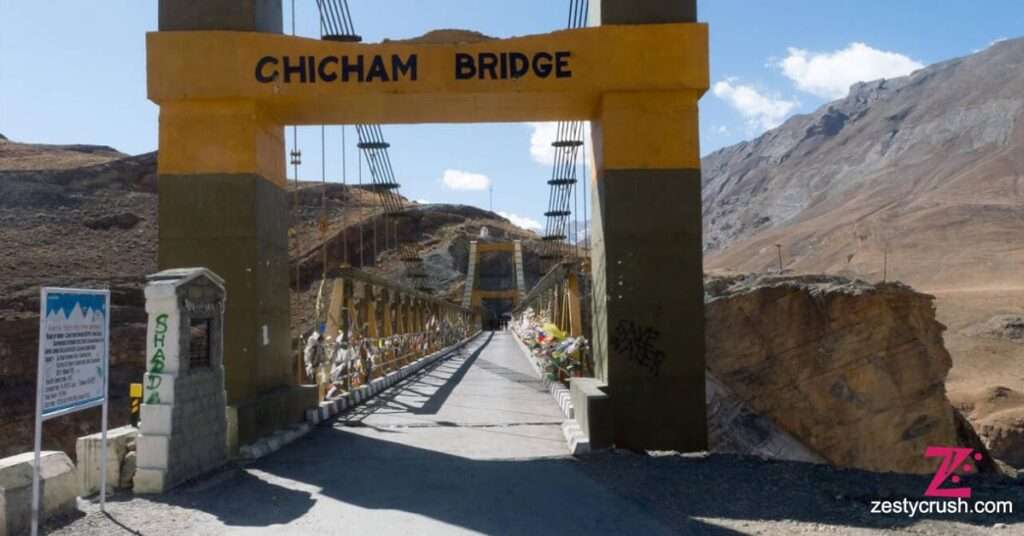
- Trekking: Trails are open, and the weather is perfect for long hikes. Popular treks include Kibber to Chicham and Pin Valley National Park.
- Camping: Locations like Chandratal Lake offer stunning summer night views under clear skies. But you need to check Chandratal lake temperature first.
- River Rafting: The Spiti River is ideal for rafting, especially in spiti in July when the water levels rise slightly due to occasional rain.
- Accessibility: Summer allows easy access to most areas, while winter is highly restrictive due to road closures.
- Activities: Summer is great for trekking, camping, and river rafting. Winter, on the other hand, is perfect for snow treks and cozy village stays.
- Crowds: Summer attracts more tourists, while winter offers solitude, with very few visitors braving the cold.
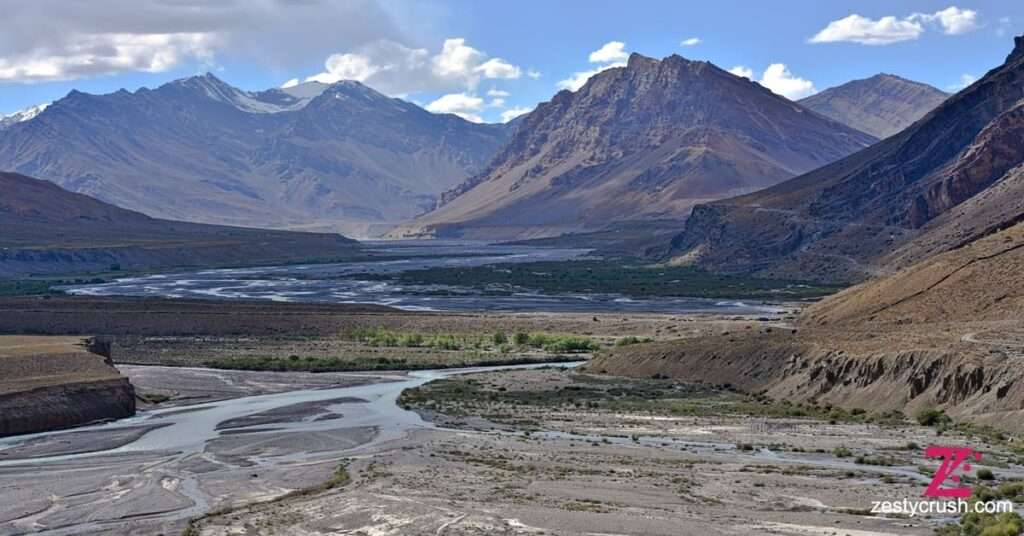
2. Winter Spiti Valley (December to February)
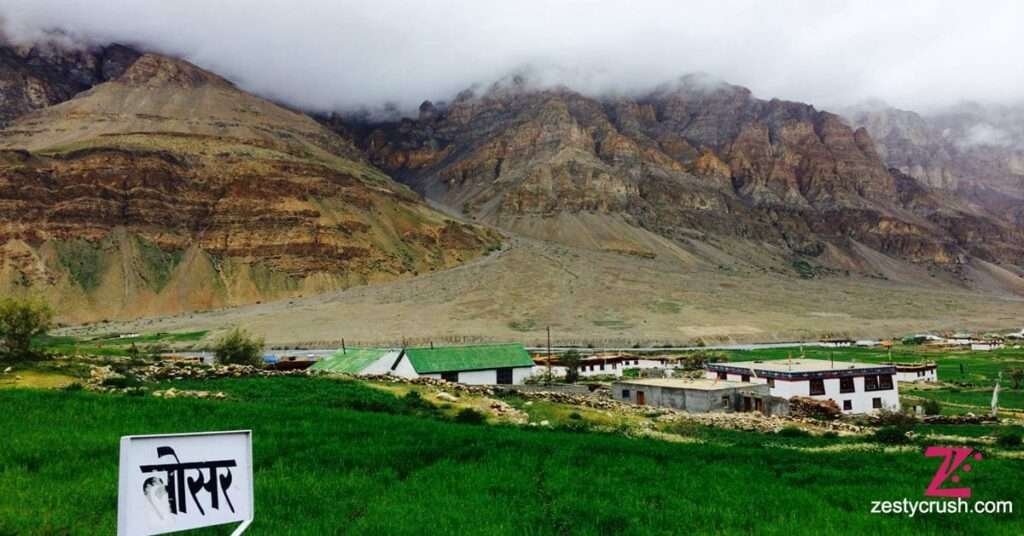
Winter is quite harsh in Spiti, with the night temperature usually dropping to -25°C. Snowfall in Spiti hides the landscape in a quiet sheet of white. Losar village is near Kunzum Pass. Rohtang Pass and Kunzum Pass are usually closed in the winter, isolating the valley. It’s a winter for the daring few, offering.
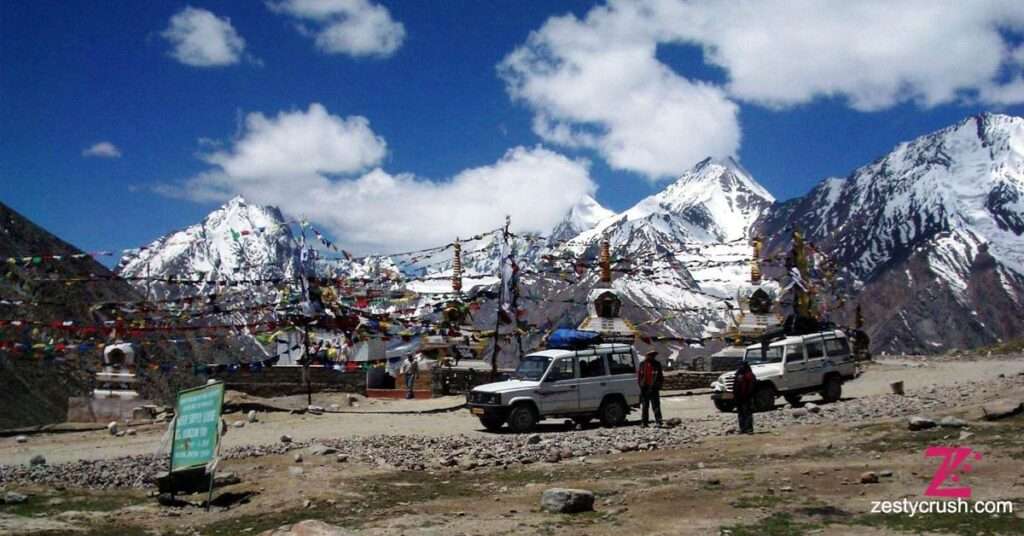
- Snow Treks: Winter treks to Pin Valley or short hikes around Kaza are possible, but only with proper gear .
- Cultural Experiences: The few who visit in winter can experience local Spitian hospitality, as many villages become isolated from the rest of the world.
- Photography: For photographers, the snow-covered landscape and the serene silence are unmatched.
Having experienced both seasons, I’d say Spiti valley in winter is magical but challenging, while Spiti valley in summer is more accessible and ideal for adventure activities.
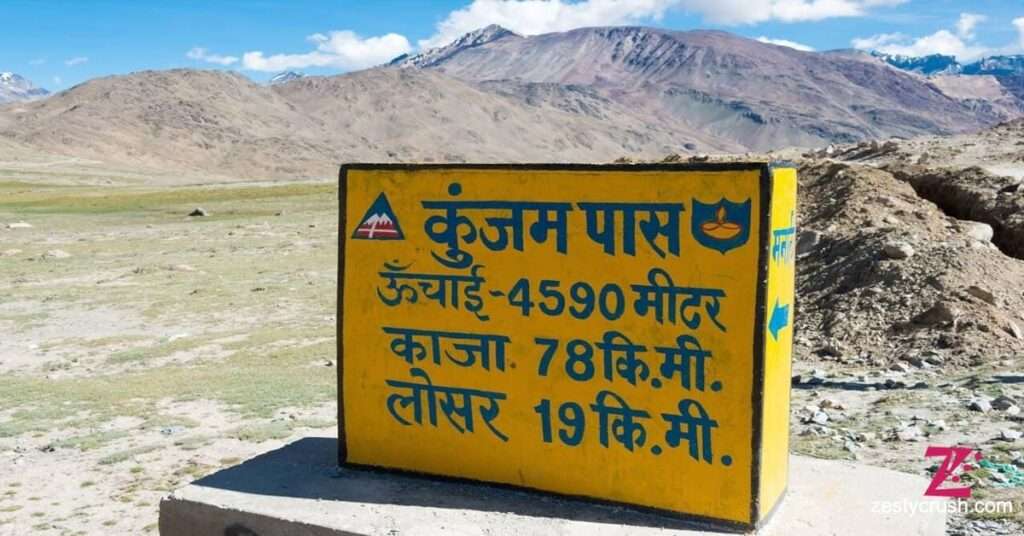
Weather Challenges in Spiti Valley
Lest not forget, the Spiti weather is unpredictable, especially in winter and monsoon. The roads may get blocked because of snow or landslides. The temperature can fall unexpectedly. Heavy snowfall at spiti valley in winters makes it hard to travel. Even when there is no snow, Spiti valley in July and August may see some landslides owing to rainfall. Always check the Lahaul and spiti weather forecast a day before your trip and be prepared for sudden weather changes.
How to Prepare for Spiti Valley’s Weather Conditions
Packing smart is key to surviving the extreme weather. In winter, pack heavy woolens, thermal wear, and snow boots. For summer, carry light layers but always have a warm jacket handy. The pin valley weather can be especially cold in the evenings, even during summer. Trust me, packing layers is the way to go!
Pack wisely for the Spiti Valley Trip to ensure a comfortable and enjoyable tour
Traveling in Spiti Valley may indeed be an adventure in itself, but packers should not forget to pack some essentials to ensure a comfortable and pleasant stay.
Warm Clothing
Such an altitude may make the temperatures pretty significant at night. Thus, never forget to carry warm clothes among which are jackets, sweaters, thermals, gloves, and socks.
Comfortable Shoes
This means it is unavoidable that the tourists possess comfortable trekking shoes because trekking is a popular activity. Also carry a good quality of Trekking poles.
Show Trekking Gears
Show trekking gears typically refer to the essential equipment and clothing needed for trekking or hiking in various conditions. These are Base Layer, Insulating Layer, Outer Layer, Trekking Pants, Socks, Snow Trekking Boots, Backpack, Hat and Gloves
Sun Protection
The sun is strong from high altitudes; carry sunscreen, sunglasses, and a big sun hat to prevent burning from UV.
Medicines
Drugs A basic first-aid kit and any necessary prescription medications should be included during your travels.
Power Bank
For instance, power supply is quite inaccessible in most remote areas; therefore, a power bank would be useful for keeping any device on.
Maps and Compass or GPS
For navigation, especially in remote areas where even GPS will not work.
Water bottles
She keeps herself hydrated by carrying a bottle of water that she replenishes at natural sources that she finds on her journey. Cash Saving The availability of ATMs has been very few, and hence it is best to carry enough cash to Lahaul Spiti Valley. With these essentials, you should be well-equipped for your journey!
Cash
Cash Saving The availability of ATMs has been very few, and hence it is best to carry enough cash to Lahaul Spiti Valley.
Additional Gear
Headlamp or Flashlight, Emergency Blanket, Firestarter. Having the right trekking gear ensures comfort, safety, and enjoyment during your outdoor adventures!
What to Expect in Terms of Weather-Related Activities
Spiti offers a wide range of activities, but they’re heavily influenced by the weather and altitude. Here’s a breakdown of what you can do, depending on the season and weather, and where you should head for each adventure.
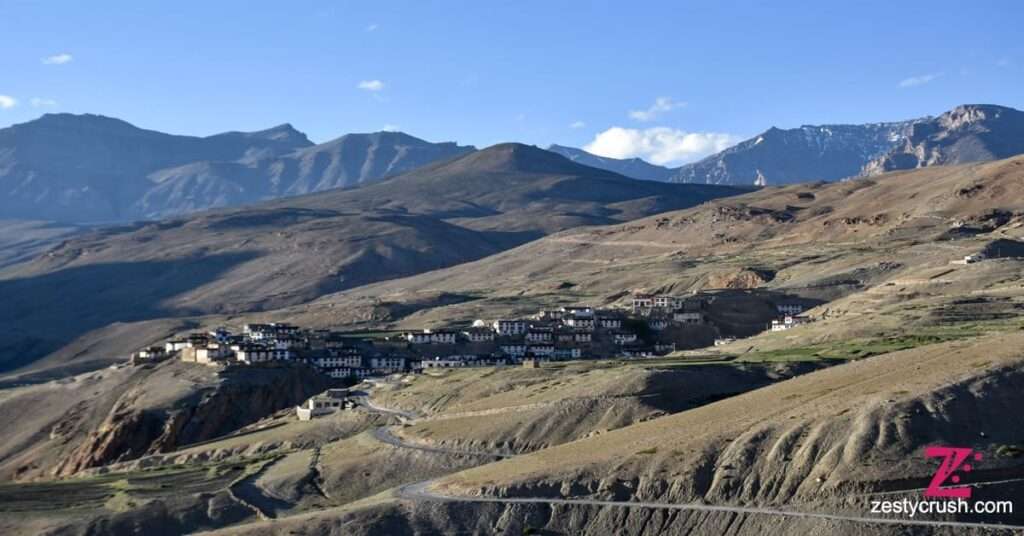
1. Trekking in Summer – Kibber to Chicham (Altitude: 4,270 meters)
- Distance from Kaza: 19 km
- Best time: June to September
- Activity: Trekking across the world’s highest village connected by a motorable road. The Spiti weather is perfect for a light trek, offering breathtaking views of deep gorges and mountain ranges.
2. Visit Key Monastery – Altitude: 4,166 meters
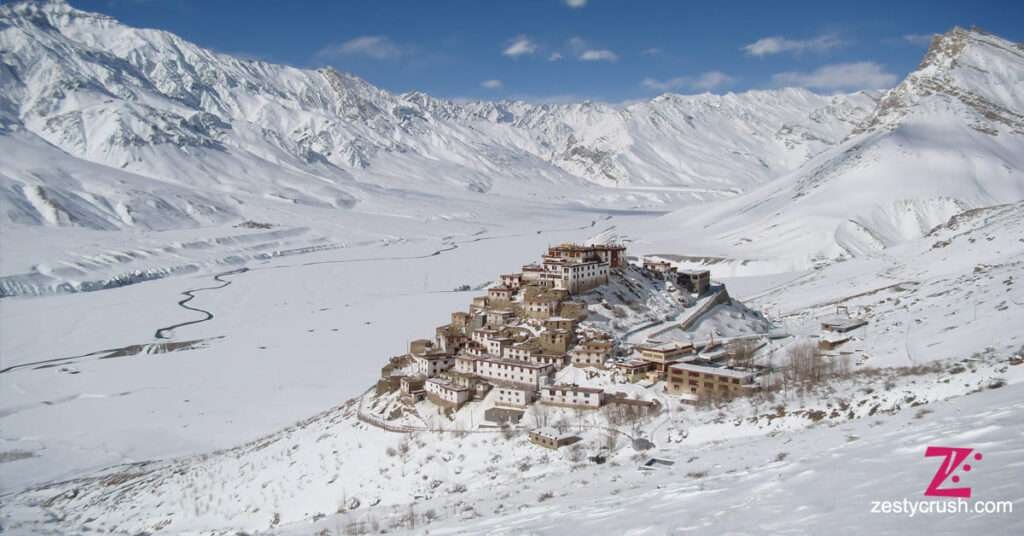
- Distance from Kaza: 15 km
- Best time: May to October
- Activity: Visit this ancient Buddhist monastery perched on a hilltop. The Spiti valley temperature in May through October is ideal for exploring this peaceful site, where monks live and practice their daily rituals.
3. Snow Trekking in Pin Valley National Park – Altitude: 3,500 to 6,000 meters
- Distance from Kaza: 30 km
- Best time: December to February (winter months)
- Activity: Snow treks in Pin Valley during winter offer a chance to witness the snow-covered landscape and possibly spot endangered animals like the snow leopard. The spiti valley in winter is a challenging but rewarding experience.
4. Camping at Chandratal Lake – Altitude: 4,300 meters
- Distance from Kaza: 52 km
- Best time: June to September
- Activity: Camp under the stars at the famous Chandratal Lake, a perfect spot to appreciate the Spiti Valley night view. The spiti temperature in summer Chandratal weather makes it ideal for spending a night by this pristine lake surrounded by mountains.
5. River Rafting in Spiti River – Altitude: 3,800 meters
- Distance from Kaza: Starts from nearby locations
- Best time: June to August
- Activity: River rafting in the Spiti River is a thrilling way to explore the valley. In spiti in July, the weather is warm enough for water activities, and the river’s flow is perfect for beginners and experienced rafters alike.
6. Village Stay at Hikkim – Altitude: 4,440 meters
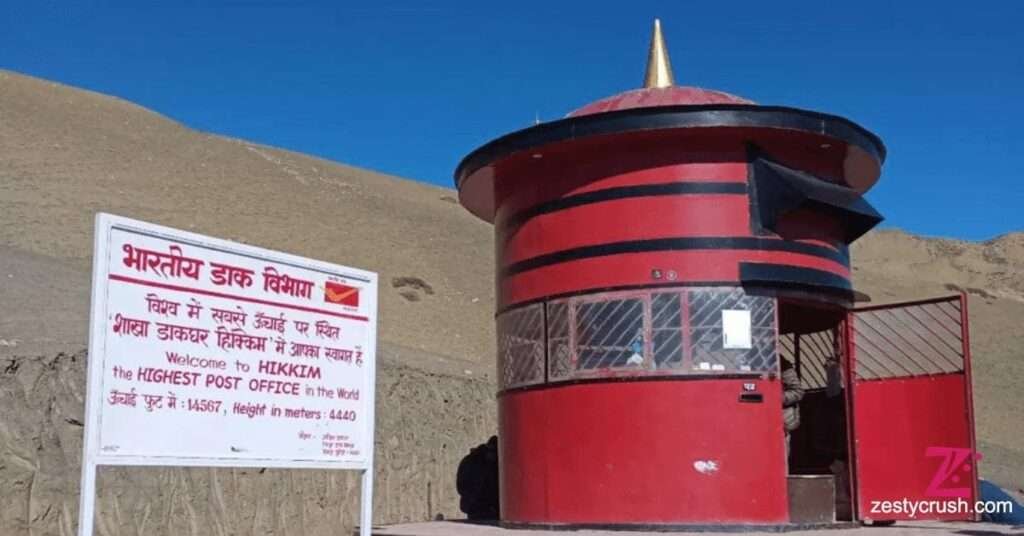
- Distance from Kaza: 16 km
- Best time: May to October
- Activity: Stay in Hikkim, home to the world’s highest post office. In Spiti valley in summer, the weather is mild, making it perfect for a few days of village life, where you can send a postcard from the highest altitude!
7. Exploring Dhankar Monastery and Lake – Altitude: 3,894 meters
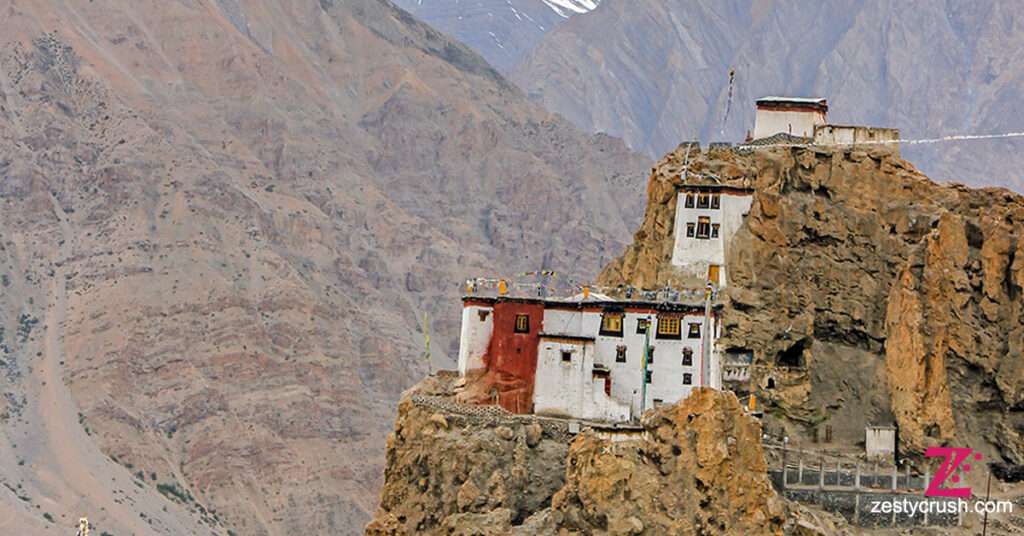
- Distance from Kaza: 34 km
- Best time: May to October
- Activity: Hike up to Dhankar Lake, located behind the Dhankar Monastery, for stunning views of the valley. The weather in Dhankar is pleasant in these months, and the serene lake is a hidden gem in Spiti.
8. Kunzum Pass Weather and Snow Expeditions – Altitude: 4,551 meters
- Distance from Kaza: 77 km
- Best time: June to September
- Activity: Cross Kunzum Pass for snow treks and high-altitude expeditions. In spiti in June, the pass is clear, offering spectacular views and access to hidden valleys.
Road Conditions in Spiti Valley Across Different Weather
The road conditions in Spiti vary greatly depending on the season. Winter roads are often closed due to snow, especially at Rohtang Pass and Kunzum Pass. In summer, the roads are clear, but landslides can occur during spiti in July and August. Always check the latest road conditions before heading out.
The Impact of Weather on Accommodation Options
Where you can stay in Spiti also greatly depends upon the weather, especially during winter. The valley spreads its arms wide open for all kinds of accommodations, from campsites to guesthouses, in summer, but it becomes quite limited in winter.
Summer Accommodation (June to August)
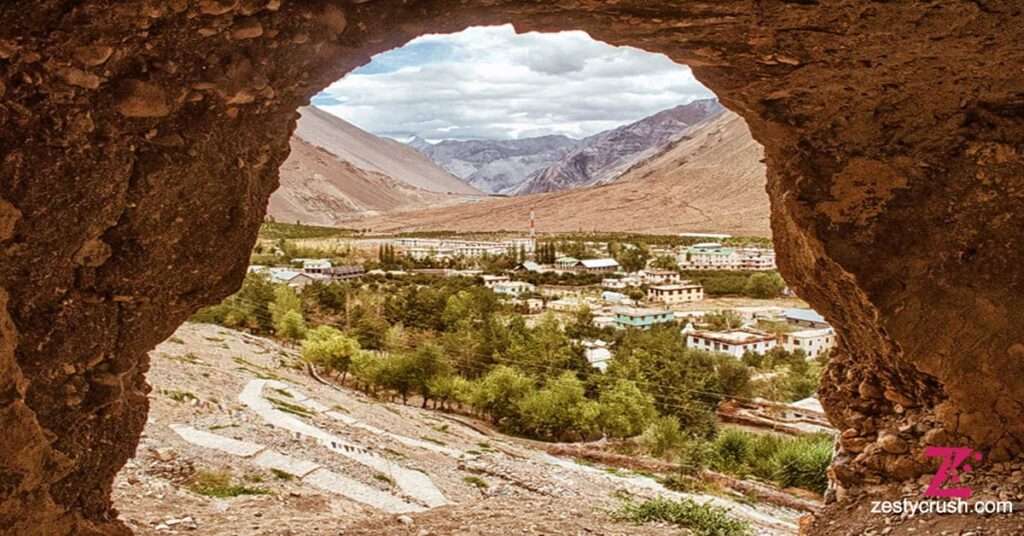
- Variety: Apart from campsites near Chandratal Lake, homestays are available only in Kaza and Kibber during the summer season.
- Availability: Hotels, guesthouses and homestay places are aplenty in popular destinations such as Kaza, Tabo, and Dhankar. Even distant villages provide homestays where you can immerse yourself in Spitian culture.
- Campsites: With Chandratal or Pin Valley, summer is the perfect time to enjoy camping while weather conditions are still pleasant and ideal for stay outdoors.
Winter Accommodation (December to February)
- Limited Options: When temperatures drop low, most hotels in Spiti close down, leaving a few guesthouses and homestays open only in Kaza and nearby villages.
- Homestays: The best time to enjoy homestays run by traditional Spitian families would be during winters; home stays made warm and authentic thanks to the frequent drop in temperature below zero degrees at Kaza and heating from firewood.
- Cultural Immersion: Staying in a homestay during winter provides a very unique opportunity to witness the ways people survive harsh conditions.
The most memorable sojourn was that of a small homestay in Kaza during my winter trip. The biting cold was compensated by the warmth of the people who welcomed me and the experience of living like them.
Weather Forecast Tools and Resources for Spiti Valley
Planning a trip to Spiti Valley requires constant monitoring of the weather, especially if you’re traveling in winter or during the monsoon season. I can’t stress enough how important it is to stay updated on the Spiti weather to avoid unexpected road closures or difficult conditions.
Recommended Weather Forecast Tools
1. AccuWeather: It depicts the very precise, up-to-date weather forecast information regarding Kaza and its vicinities. You can find the current temperature in Kaza, or you could check the temperature you would be experiencing on your visit.
2. IMD: Indian Meteorological Department provides very accurate forecasts for high-altitude regions like Spiti. This website is excellent for checking seasonal shifts, and that too most notably in the monsoon and winter periods.
3. Windy: Meant primarily for real time analysis of weather, covering details of wind speed and snowfall. It is particularly useful in the process of selecting trekking routes.
4. Local Travel Forums: Any road conditions, Spiti valley weather and accessibility could be known through a travel forum site like IndiaMike or Himachal Pradesh Tourism website that provide information from fellow travelers and locals. Such forums come handy for the latest Rohtang pass weather in December or Kunzum pass temperature news.
5. Social Media: The best updates available will be from local guides or the tour companies on Instagram or Facebook, because they often post photos or videos that show road conditions or changes in the weather, so one can decide in real time.
Why You Should Always Check the Forecast
- Summer: Summer afternoons in Spiti valley are enjoyable, but the landslides during the monsoon season may hamper travel. One must check the Spiti valley temperature in July and the road condition while planning.
- Winter: The Lahaul and Spiti weather during winter is unpredictable heavy snowfall closing roads without any warning. Follow the forecast to get in gear.
Tips for Traveling in Spiti Valley Across All Seasons
1. Summer (June to August):
Spiti valley in summer is warm during the day but cool at night. Carry a mix of light layers and a warm jacket.
Always check the manali weather in August if you plan to enter Spiti via Rohtang Pass during the monsoon. Landslides are possible.
Trekking and camping are best enjoyed in Spiti valley in July and August, when the valleys are green and vibrant.
2. Monsoon (July to August):
Although Spiti receives less rainfall, the roads from Manali to Spiti can be affected by landslides. Check the spiti temperature today and road conditions before your trip.
Waterproof gear is essential, as Spiti in August may experience occasional showers.
3. Winter (December to February):
Spiti valley in winter is an extreme adventure. Pack heavy woolens, thermal layers, snow boots, and gloves.
Be prepared for road closures, as the Rohtang weather in December and January can lead to blocked passes.
4. Spring and Autumn (March to May and September to November):
These are the best times to visit Spiti Valley for mild weather and fewer tourists.
The temperature in Spiti valley during these months is perfect for trekking and sightseeing without extreme heat or cold.
It’s a bend of one’s neck and elbow to travel to Spiti, yet each season offers something unique. It may be summer, that will facilitate trekking through the green valleys, or maybe winter, where you’re ready for the snow-adventure. Planning ahead for the Spiti Valley weather ensures a safe and unforgettable trip.
Conclusion
No matter which time of the year you visit Spiti, the valley has something to offer you. From the vibrant green of summer to the quiet snow-covered expanses of winter, each season brings a new taste to your adventure. Just be sure to plan according to the Spiti Valley weather and you’ll be left reminiscing about the time you’ve spent in Spiti.
FAQ
What is the Spiti valley temperature today?
Check local weather apps for the latest updates. The temperature varies significantly based on the season, from mild in summer to freezing in winter.
How cold is the Kaza temperature in December?
The Kaza temperature in December can drop as low as -20°C, with heavy snowfall expected.
What’s the Rohtang weather in December like?
The Rohtang pass weather in December is extremely cold, often leading to the pass being closed due to heavy snow.
When is the best time to visit Spiti Valley for trekking?
The best time for trekking is from June to September when the Spiti valley temperature is moderate, and the passes are open.
What is the current temperature in Kaza?
The current temperature in Kaza varies by season. In summer, it ranges from 15°C to 20°C, while in winter, it can drop to -25°C.
Can we visit Spiti valley in March?
Yes but expect some snow on the roads. The Spiti valley temperature in March can still be cold, with nighttime temperatures below freezing.
How is the Spiti valley temperature in April?
The Spiti valley temperature in April ranges from 5°C to 15°C, offering mild weather for trekking and sightseeing.
What should I pack for Spiti valley in winter?
Heavy woolens, snow boots, thermal wear, and a thick jacket are necessary for Spiti valley in winter due to the extremely low temperatures.
When does the Kunzum pass open for travelers?
Kunzum Pass typically opens in June, depending on the amount of snow.
Is snowfall in Spiti common in December?
Yes, snowfall in Spiti Valley is common from December through February.
How is the Spiti in January experience?
Spiti in January is freezing but beautiful. The landscape is covered in snow, and it’s perfect for winter lovers.
What’s the Manali climate today like in winter?
Manali climate today in winter is cold and often sees snowfall, with temperatures dropping below freezing.
Is it safe to visit Spiti valley in July?
Yes but be cautious of landslides during the monsoon. Spiti valley in July is lush and green, but roads can be tricky.
How is Spiti valley in summer different from winter?
Spiti valley in summer is warm, green, and full of life, while winter is harsh, snowy, and quiet.
Can we visit Spiti in August despite the monsoons?
Yes but be mindful of landslides and road conditions. Spiti in August is still a beautiful time to visit, with occasional rain.

